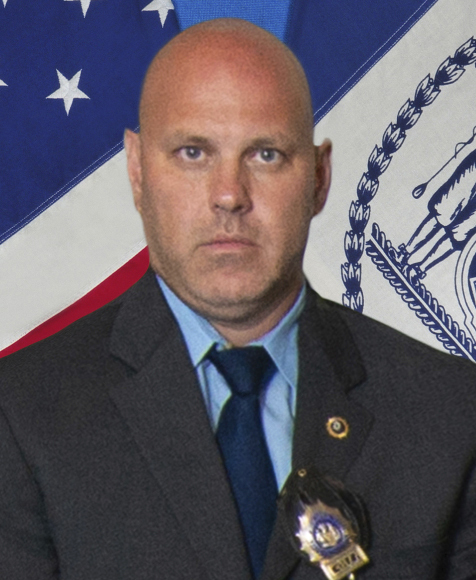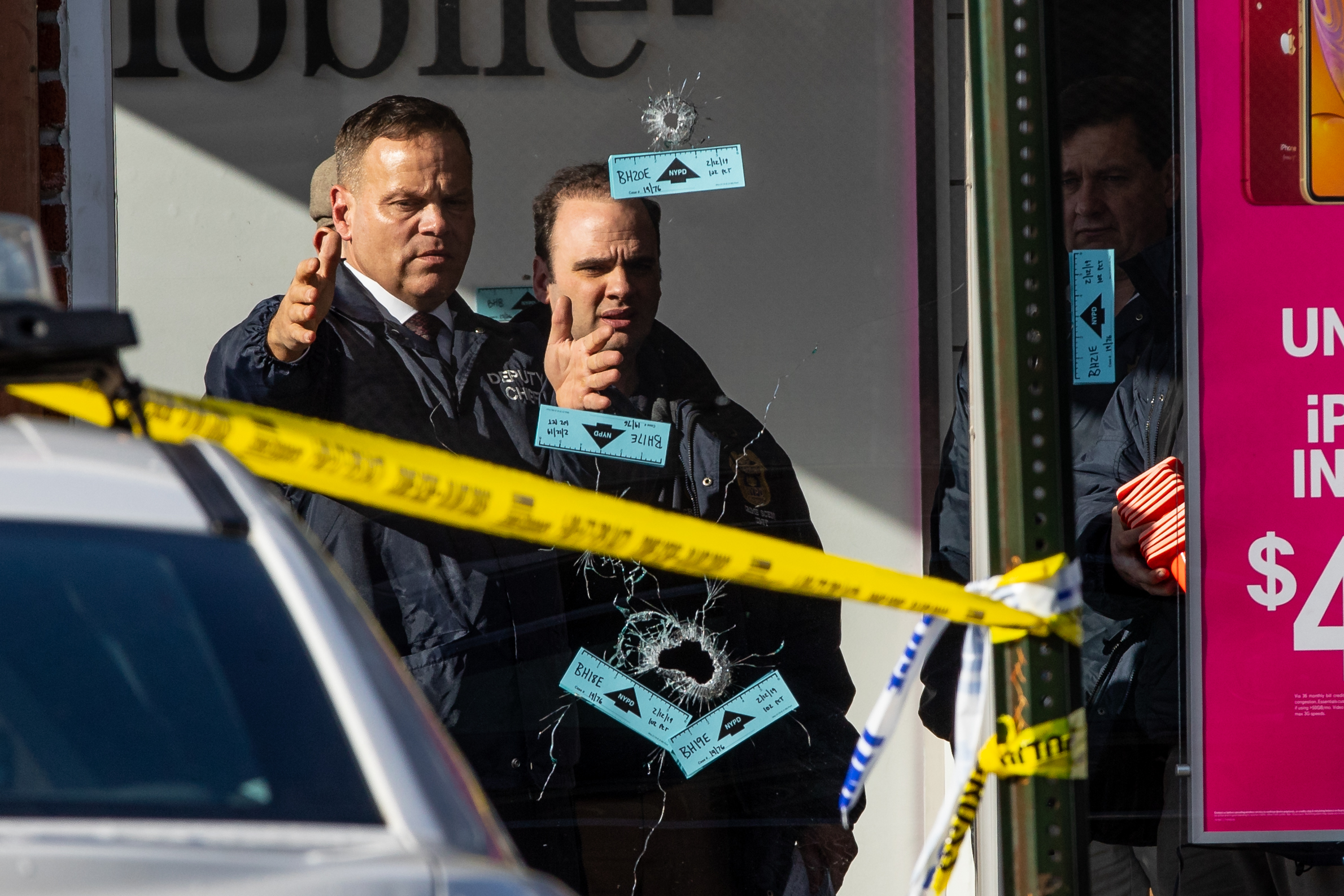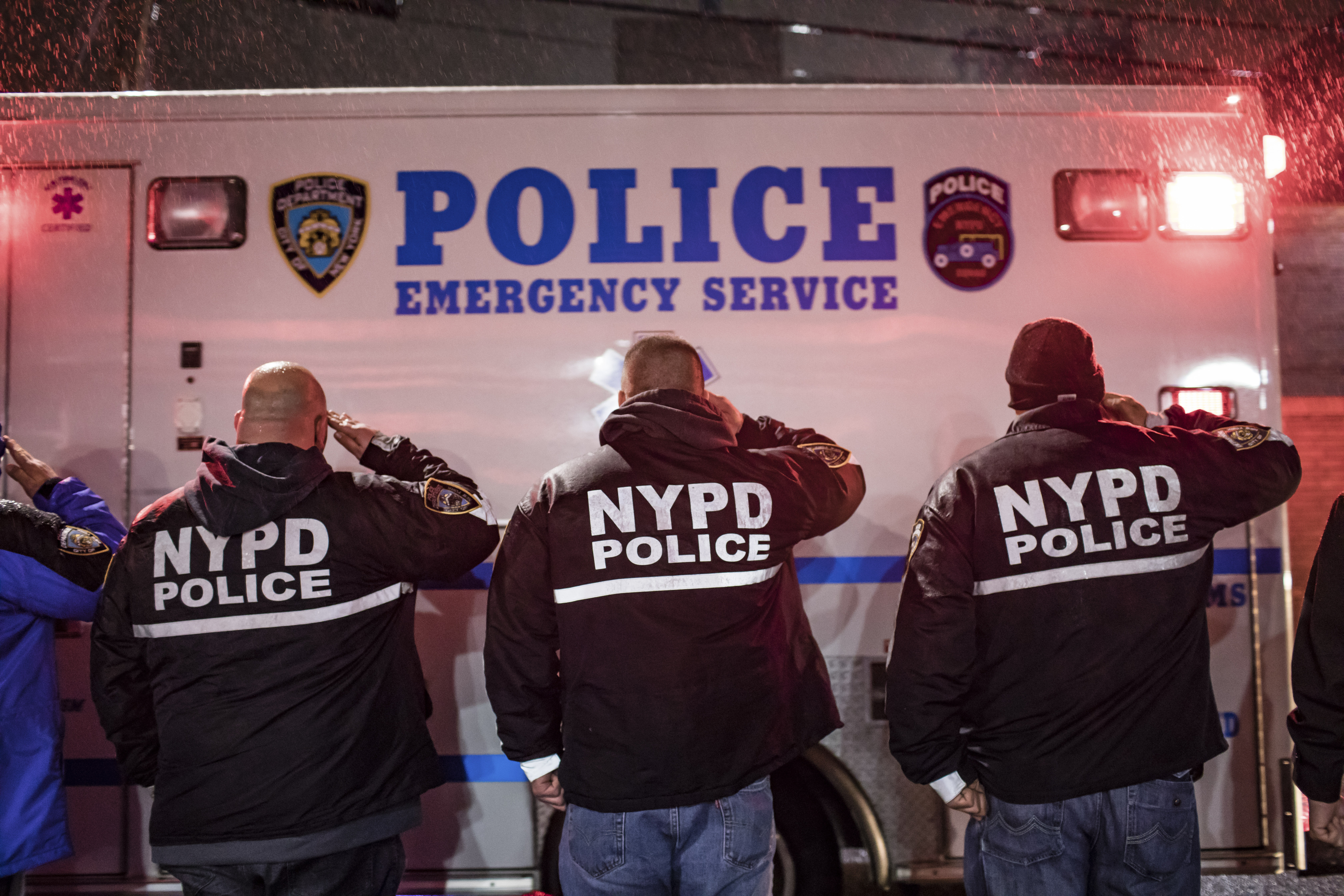A question that often arises after many police shootings, especially when officers fire multiple rounds, is why did they need to shoot so many times?
That question came up after Tuesday evening’s police fusillade in Queens that claimed the life of a veteran detective and wounded a sergeant. Seven officers fired 42 rounds in 11 seconds. Their target was a 27-year-old man suspected of robbing a T-Mobile store, who was holding a pistol that turned out to be fake.
Eight of the bullets knocked down the suspect, but the shooting also left Detective Brian Simonsen, 42, dead and Sgt. Matthew Gorman, 34, seriously wounded.
So what exactly happened?
On Tuesday, the police received a call about a masked man with a gun in the T-Mobile store at Atlantic Avenue and 120th Street. The caller said the man was holding two employees hostage in a backroom.
Officers in at least half a dozen police cars quickly responded that they were en route. The first group to arrive included Simonsen and Gorman, both in civilian clothing, and two uniformed officers. The officers and Gorman entered the store, and were met by the man, Christopher Ransom, 27, who advanced toward them from the back of the store with an authentic-looking imitation handgun.
The officers and the sergeant retreated from the store. By then, several more officers had arrived and were in front of the store. The police said Ransom approached the store’s door and pointed his fake gun at the police, moving it as if he were firing.
The police opened fire, shooting Ransom through the glass storefront. Simonsen and Gorman, who were not wearing body armor, were caught in crossfire, senior police officials said.
Why 42 shots?
The police are trained to fire their weapons until a threat has been eliminated, not one or two rounds at a time. In ideal circumstances, an officer can take cover and shoot in small bursts, reassessing the threat after every couple of rounds. But facing a lethal threat, an officer tends to empty his weapon, experts on firearms training say.
In recordings of the officers’ panicked radio calls to a despatcher on Tuesday, a thunderous barrage of gunfire can be heard in the background. It would have been practically impossible for each officer to stop and realise how many bullets had been fired during those 11 seconds.
Also, it’s very unlikely that an officer in that type of situation would know how many other officers had previously fired their weapon. For example, the seventh officer to shoot in a sequence would not have likely known in what order they were shooting, the police have said after similar incidents.

A photo of detective Brian Simonsen provided by NYPD. The New York Times
Another case: Five officers, 50 shots
When the police opened fire on Tuesday, they riddled the glass front and side of the T-Mobile store with bullets — at least 16 holes were visible the following day.
That scenario might have caused a phenomenon that an expert witness described as “blowback” at the 2008 criminal trial of three officers who shot and killed Sean Bell, an unarmed driver leaving his bachelor party in Queens in 2006.
In that case, officers, believing the men in the car had a gun, fired 50 rounds at Bell and his two passengers as they attempted to flee in a car. At the trial in state Supreme Court in Queens, a crime scene analyst, Alexander Jason, said that bullets passing through Bell’s car windows might have caused glass to blow outward, making it appear to the officers that they were being shot at.
All three officers who faced criminal charges — two others involved in the shooting were not charged — in the case were acquitted. But in 2010, New York City agreed to pay more than $7 million to settle a federal lawsuit filed by Bell’s family and two friends.
The fear factor
Experienced police officers say the adrenaline that flows during a live gunfight can push an officer to fire more than he even realises.
One of the officers in the Sean Bell incident, Detective Michael Oliver, fired an eyebrow-raising 31 of 50 rounds, first emptying his pistol, which held 16 rounds, reloading it with a 15-round magazine and then emptying it again.
Oliver recalled the events of that night in his testimony before a grand jury in 2007:
“I looked at my gun. I didn’t know if it had any bullets or something was wrong. I was standing right in front of him. I see him lifting his arms. I didn’t want to die. I reloaded the gun, and I continued to fire, and the shots still are going on around me. I don’t know where they are coming from, and all this is happening in a matter of a couple of seconds, which it seemed.”

NYPD detectives examine bullet holes at the cellphone store where the shooting took place. The New York Times
Shooting can be ‘contagious’
Another factor on Tuesday that investigators may examine is the phenomenon of “contagious shooting,” which theorises that police officers fire because other officers are firing, with everyone believing the threat against them is growing.
In 1995, officers responding to a robbery at a bodega in the Bronx fired 107 rounds. “They were shooting to the echo of their own gunfire,” a former police official said at the time.
On Tuesday, Gorman fired 11 rounds, the police said, and Simonsen, two. Five other officers fired the remaining 29 rounds.
What happens now?
An investigation into the Tuesday’s “friendly-fire” incident is being conducted by the Force Investigation Division, which investigates all police shootings. Investigators will have access to footage from five officers’ body cameras and surveillance video and interviews with witnesses. Police investigators do not generally interview the officers who have fired their weapons right away for legal reasons.
Past shootings have led to revisions in police training, and time will tell whether that occurs in this instance. At a news conference on Wednesday, Chief Terence Monahan, the police department’s highest-ranking uniformed officer, spoke about the gap between training and real-life situations.
“Every six months, when you go to the range, you get trained,” he said, referring to the police firearms range. “We talk about the tactics, we talk about incidents that have occurred over the course of the last six months. You want to avoid that crossfire situation. But understand — it’s great to train — everything happens in a second. You’re reacting within seconds and you’re in fear for your life. Your adrenaline is high.”
c.2019 New York Times News Service











